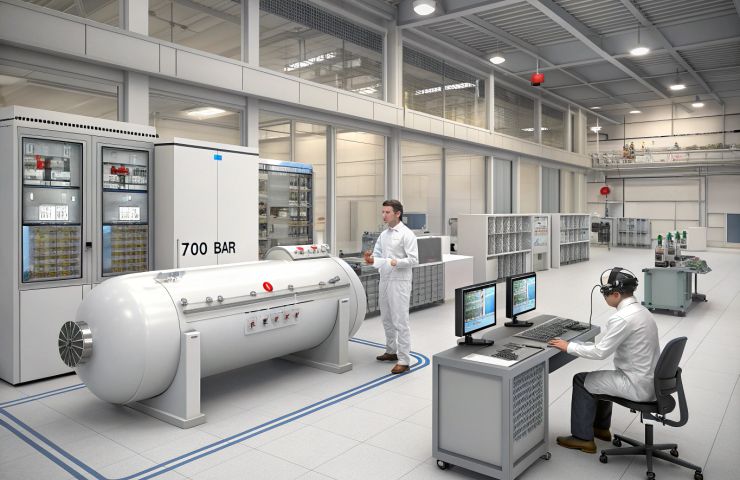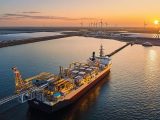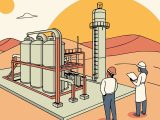
Beyond Aero Reaches TRL6 Milestone with Hydrogen Fuel Cells for BYA-1 Business Jet
October 2, 2025What if your next business flight didn’t just sidestep emissions—it erased them completely, leaving only a gentle mist of water vapor behind? That dream edged closer to reality on October 1, 2025, when Beyond Aero celebrated hitting Technology Readiness Level 6 for its hydrogen-electric propulsion system aboard the eight-seat BYA-1 business jet. The big reveal happened at their integrated powertrain lab in Toulouse, France, signaling a shift from experimental rigs to real-world readiness and marking a milestone in the push to decarbonize business aviation with hydrogen fuel cells and cutting-edge fuel cell technology.
Toulouse Lab Brings Hydrogen Propulsion to Life
If you’ve ever wondered what a next-gen aerospace workshop looks like, step into Beyond Aero’s Toulouse facility. Nestled in the same ecosystem that gave rise to Airbus, the lab feels like a pit lane crossed with a high-tech garage. Rows of test benches connect high-pressure hydrogen bottles to three independent fuel cell stacks. Sensors beep, valves hiss, and cooling loops whirl—all to simulate more than 1,200 kilowatts of thrust under flight-like loads. Those Type IV tanks, cranked up to 700 bar, feed the EKPO NM20 modules, pushing the envelope on hydrogen storage. Many of the engineers here jumped ship from the now-defunct Universal Hydrogen, bringing along patents and test gear that Beyond Aero snapped up in mid-2024.
But this place isn’t just hardware and high-pressure hoses. Thanks to Dassault Systèmes, parallel digital twins of the BYA-1 airframe and powertrain run alongside the live tests, letting teams tweak safety cases and early integration points on the fly. It’s a savvy mash-up of simulation and reality, speeding up certification steps and cutting through red tape before the aircraft ever leaves the ground.
How the System Works
At its core, Beyond Aero’s setup is surprisingly elegant. Hydrogen enters the fuel cell’s proton exchange membrane and splits into protons and electrons—that age-old chemistry now repurposed for business jets. The EKPO NM20 fuel cell platform converts hydrogen into DC electricity, while onboard batteries deliver extra kick for takeoff. From there, megawatts flow through BrightLoop DC-DC converters, matching voltage to the electric motors’ demands. Behind the scenes, FEV Aerospace handled the mechanical integration and Airbus Protect led the functional hazard and safety analyses, weaving hardware, software, and compliance expertise into a neat package that meets tight aircraft-system tolerances.
Fueling the Business Case
Startups usually scramble for every euro, but Beyond Aero’s been on a roll. Since launching in December 2020, they’ve raised over $50 million, including a hefty $20 million Series A round in January 2025. Investors hungry for genuine zero-emission technology saw a lean, driven team that sidestepped the drawn-out timelines plaguing other hydrogen programs. When Universal Hydrogen folded in mid-2024, Beyond Aero pounced—grabbing patents, test benches, and veteran engineers, saving years of R&D and vaulting ahead in the race.
But this isn’t just about intellectual property. By anchoring talent and know-how in Toulouse, Beyond Aero is planting a flag in Europe’s sustainable energy corridor. Airports, fuel suppliers, and OEMs are watching closely, itching to see if green hydrogen infrastructure takes off—and whether business jets might pilot the path for larger passenger aircraft.
Why It Matters
We’ve heard grand promises about hydrogen fuel cells and green aviation for years, but most still spin out kerosene burners. Beyond Aero’s TRL 6 milestone flips the script: it proves that advanced fuel cell technology and robust hydrogen storage can handle the rigors of real flight testing, not just trade-show demos. With global carbon targets tightening and customers demanding cleaner travel, airlines and investors are leaning in. If the BYA-1 nails certification, expect a surge of orders—and a rush by airports to install hydrogen refueling stations. And if hydrogen infrastructure really takes off, costs for electrolysis, tank manufacturing, and fuel cell stacks could plummet—making green hydrogen competitive, maybe even cheaper than jet fuel per flight. That kind of shift could supercharge decarbonization in maritime, trucking, and large-scale power storage, ramping up the global push for sustainable energy.
What’s Next
Hitting TRL 6 was a massive leap, but the finish line’s still ahead. Next up is mounting the propulsion system on a flight demonstrator to chase TRL 7 and 8, where lab rigs give way to airborne trials. Then comes the big test—securing EASA’s CS-23 certification. If those digital twins and early partnerships pay off, Beyond Aero might zip through approvals. Prospective customers have already toured the lab, whispering about letters of intent once the BYA-1 clears its final hurdles.
It’s a puzzle of tech, policy, and beefed-up infrastructure, but that October day—fuel cells humming in unison and hydrogen tanks locked down—proved one thing: the era of zero-emission technology in business aviation has truly taken off. Will we see the first commercial departure by 2030? Time—and the next wave of flight tests—will tell.



 With over 15 years of reporting hydrogen news, we are your premier source for the latest updates and insights in hydrogen and renewable energy.
With over 15 years of reporting hydrogen news, we are your premier source for the latest updates and insights in hydrogen and renewable energy.